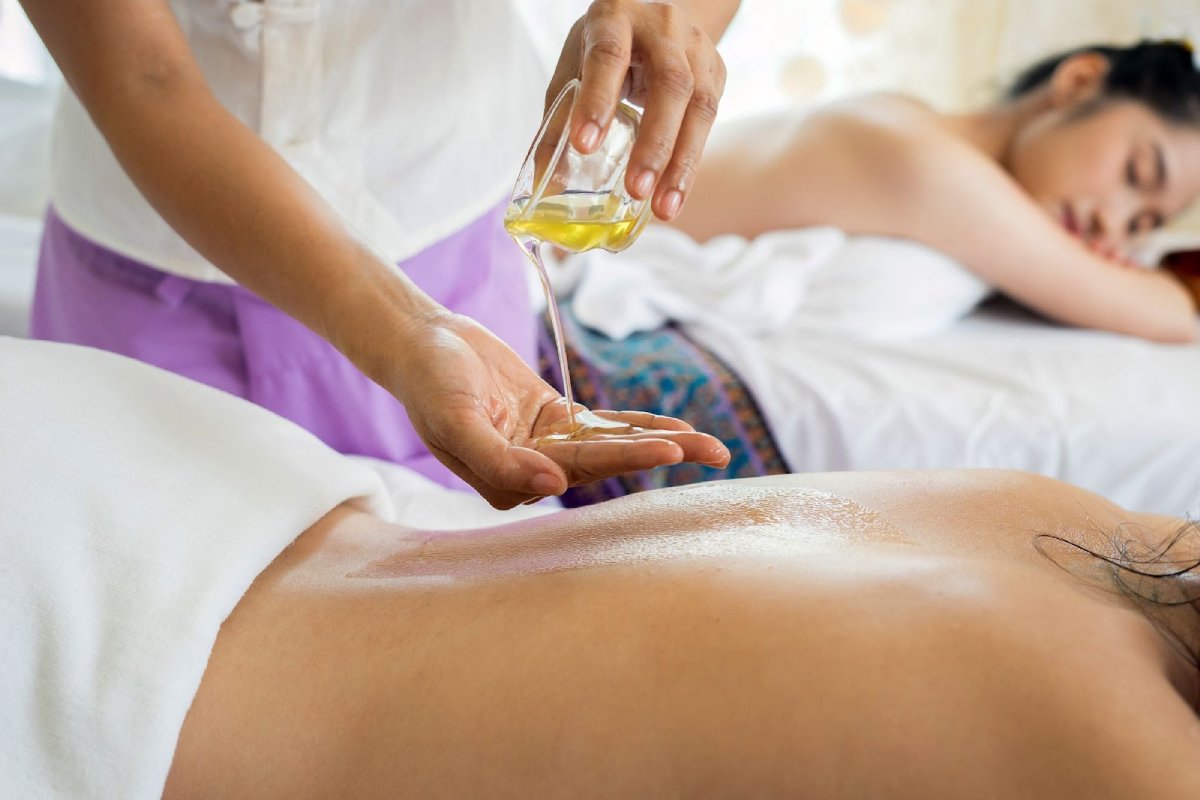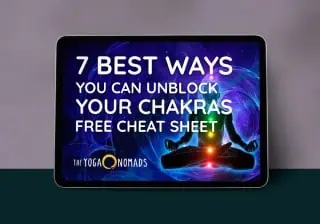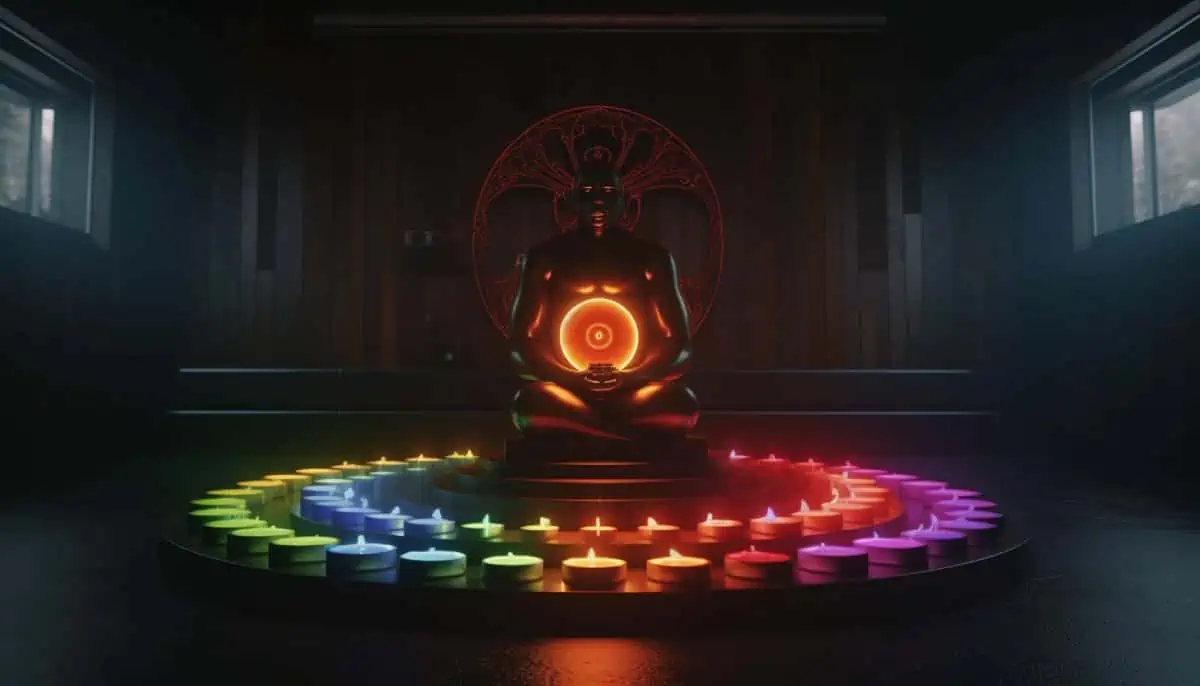Listen to this article:
Various types of energy work can help realign the subtle body and the chakra system. One of the most popular chakra healing methods is Reiki. This holistic modality attunes the energy channels through crystals and light touch.
However, suppose you’re looking to improve the energy flow in the main chakras and gain other health and wellness benefits. In that case, a chakra-balancing massage may be for you. Chakra massages use different massage techniques, energy work, and scents to nourish and align the subtle energy channels.
Let’s explore further what a chakra balancing massage entails and how it can affect you physically, emotionally, and spiritually.
Contents
- 1 What Is A Chakra Massage?
- 2 Benefits Of A Chakra Balancing Massage
- 3 What To Expect From A Chakra Balancing Massage
- 4 Massage For The Root Chakra
- 5 Massage For The Sacral Chakra
- 6 Massage For The Solar Plexus Chakra
- 7 Massage For The Heart Chakra
- 8 Massage For The Throat Chakra
- 9 Massage For The Third Eye Chakra
- 10 Massage For The Crown Chakra
- 11 Final Thoughts
What Is A Chakra Massage?
A chakra balancing massage uses various techniques, such as deep tissue massage on the back and spinal muscles and reflexology on the feet. However, what makes it unique from standard massages is the energy healing component.
Free Cheat Sheet: The 7 Best Ways to Unblock Chakras
Download nowEach chakra has a physical location, and massaging this area can help to stimulate the energy flow there. In addition, massage therapists will enhance the chakra healing power by using essential oils. Each chakra has associated scents, so using the corresponding oil on a chakra can help open it and heal any blockages.
If one particular chakra you feel is blocked, you can massage the targeted area yourself through self-massage. However, for the best results and complete chakra-balancing treatment, look for professional massage therapists who offer this service. Your therapist may be able to determine which energy centers are unbalanced, or you can ask them to focus on specific energy points.
Benefits Of A Chakra Balancing Massage
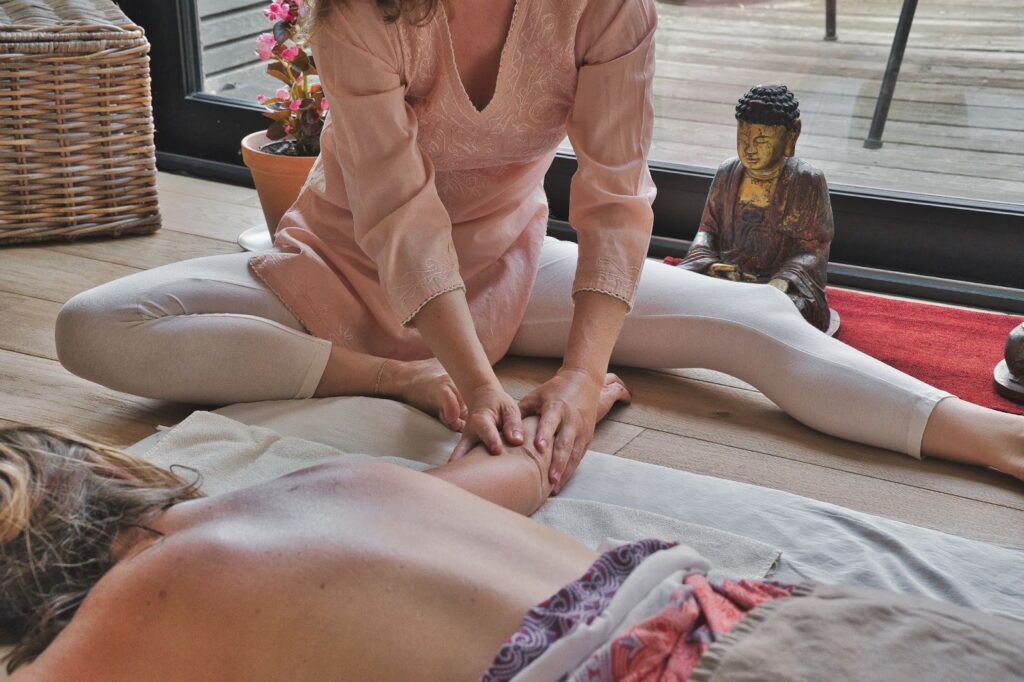
As previously mentioned, chakra massages can restore balance in the energetic body, bringing all seven chakras into proper alignment so the energy can flow freely. However, chakra massages also have the same benefits as other massage styles, often combined with deep tissue massage and reflexology techniques.
As a result, a chakra-balancing massage will bring the following benefits:
- Immune system boost – Massage increases blood flow throughout the body, stimulating the immune system and flushing out toxins.
- Stress relief – Massages promote relaxation in many ways. As a self-care practice, a massage allows you to unwind and switch off, dedicating time to yourself. Moreover, the touch and scent used in the massage help relax the nervous system.
- Muscle tension relief – The deep tissue massage techniques used in a chakra balancing massage can reduce muscular pain or tension. In addition, as blocked chakras can cause physical stress, the energy work of a massage alone can relieve pain. What’s more, as the spine and back muscles are focused on in this type of massage, it is particularly beneficial for back pain.
- Improved overall well-being – In addition to the above, massages can help you sleep better, reduce anxiety and depression, and improve joint mobility and flexibility.
What To Expect From A Chakra Balancing Massage
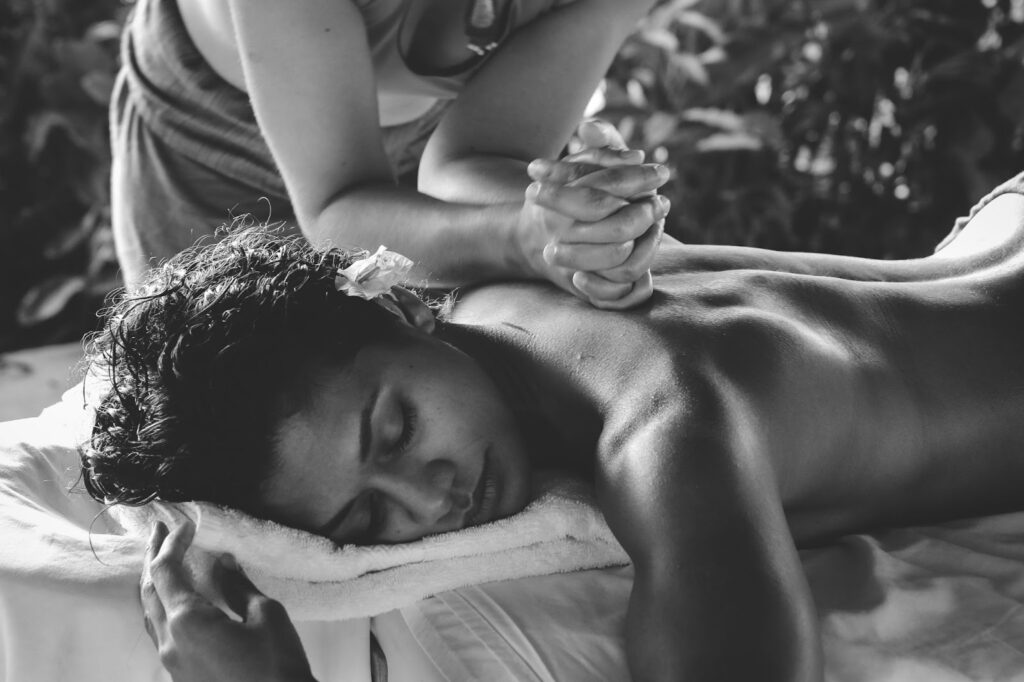
Your chakra balancing session will start with a consultation where you can discuss any energetic blockages you feel you have. Your therapist may also take this time to engage your senses, such as smell and touch, as a way to identify possible imbalances.
During a chakra balancing massage, the therapist will typically work on seven physical locations of the body, targeting each of the seven chakras. They will use small circular strokes in a clockwise direction in each area corresponding to one of the primary energy centers.
Aveda Institute is one of the leading massage schools in the USA that offers training courses in chakra massages. The Aveda chakra balancing massage involves three stages:
- Deep tissue massage – A specific and slow movement that targets the connective tissue and fascia around the back and spine, where 5 of the 7 chakras reside. Deep tissue work uses either a lengthening stroke (with the muscle fibers) or a broadening stroke (across the muscle fibers).
- Foot Reflexology – This method focuses on the endocrine gland associated with each chakra by massaging the foot reflex points.
- Energy work – This stage involves lightly touching each chakra with intentional thought. The massage therapist will also guide you through a visualization where you’ll be asked to repeat a meditative word for the specific chakra being worked on. For example, you may be asked to silently repeat the word “grounding” while the therapist works on the root chakra.
In addition to the above stages, your therapist may use specific essential oil blends and healing crystals to enhance the healing benefits further.
At the end of your chakra balancing massage, you will likely feel calm, relaxed, and in a state of harmony, similar to other styles of massage and bodywork.
Moreover, as the massage aims to release energetic blockages, you may experience an emotional release during or after the treatment. For example, you may feel a strong sense of compassion, love, and gratitude if the Anahata chakra was blocked before the session.
Chakra Test: Discover Your Strongest, and Weakest, Chakras
Take the free testHowever, depending on the state of your chakra system, it may take a few sessions until you start to notice the benefits.
Massage For The Root Chakra
The first chakra, known as the root chakra, or Muladhara, is responsible for our sense of groundedness, safety, and security. In addition, it governs our basic needs such as food, water, and shelter, and helps connect our physical body to the earth.
The physical location of the root chakra is the tailbone, at the base of the spine. Therefore, you can massage the lower back and spine, focusing on the first three vertebrae to stimulate the grounding, earthy energy here. You can also improve energy flow to the first chakra by massaging the legs, particularly the gluteal muscles and the feet.
If using an essential oil, opt for cedarwood, patchouli, or frankincense scents.
Massage For The Sacral Chakra
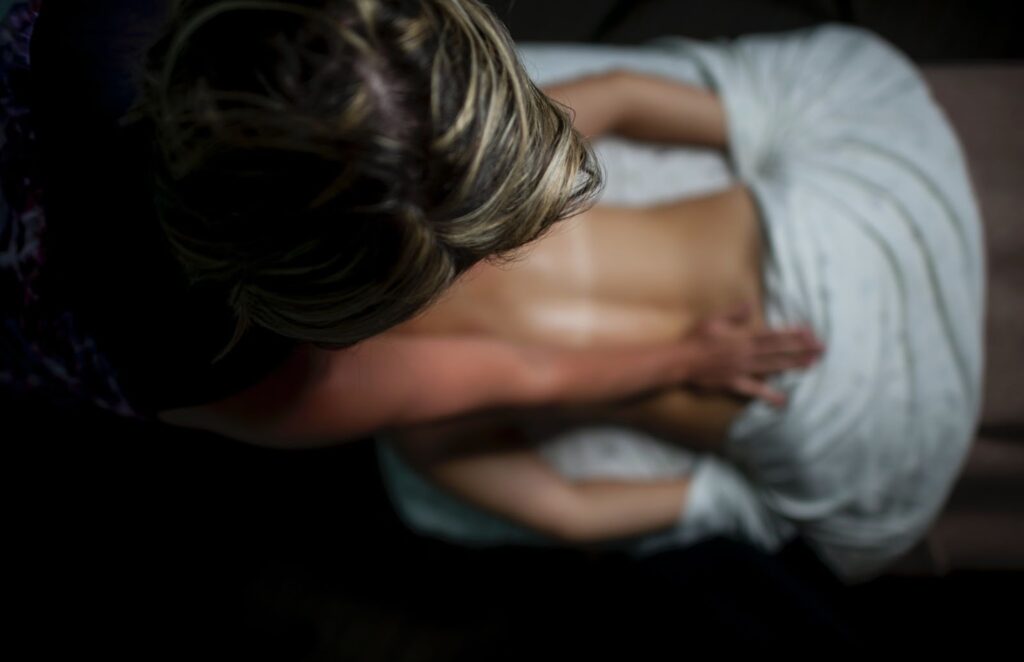
The second chakra, known as the sacral chakra, or Svadhishthana, helps to regulate our emotions, tap into our creativity, experience pleasure and passion, and get in touch with our senses. This pleasure chakra is also associated with intimacy and the reproductive organs.
The sacral chakra is located in the lower belly, two inches below the navel. Therefore, lower abdominal massage and targeting the lower spinal vertebrae and back muscles work well for this center. Moreover, using myofascial massage techniques on the hip flexor muscles can improve the energy flow to the second chakra and release stagnation.
Opt for ylang-ylang, sweet orange, or rose scents when using essential oil.
Massage For The Solar Plexus Chakra
The third chakra, known as the Solar Plexus, or Manipura, is the home of our personal power. This chakra relates to confidence, self-esteem, and courage and pushes us to take action and face our fears.
The Solar Plexus chakra is located in the upper abdomen, between the belly button and the lower ribs. Massage the stomach in a circular, clockwise direction to stimulate this center. This not only increases the fire element but it helps eliminate waste in the body and negative thoughts.
If using an essential oil, opt for geranium, ginger, lemon, or juniper scents.
Massage For The Heart Chakra
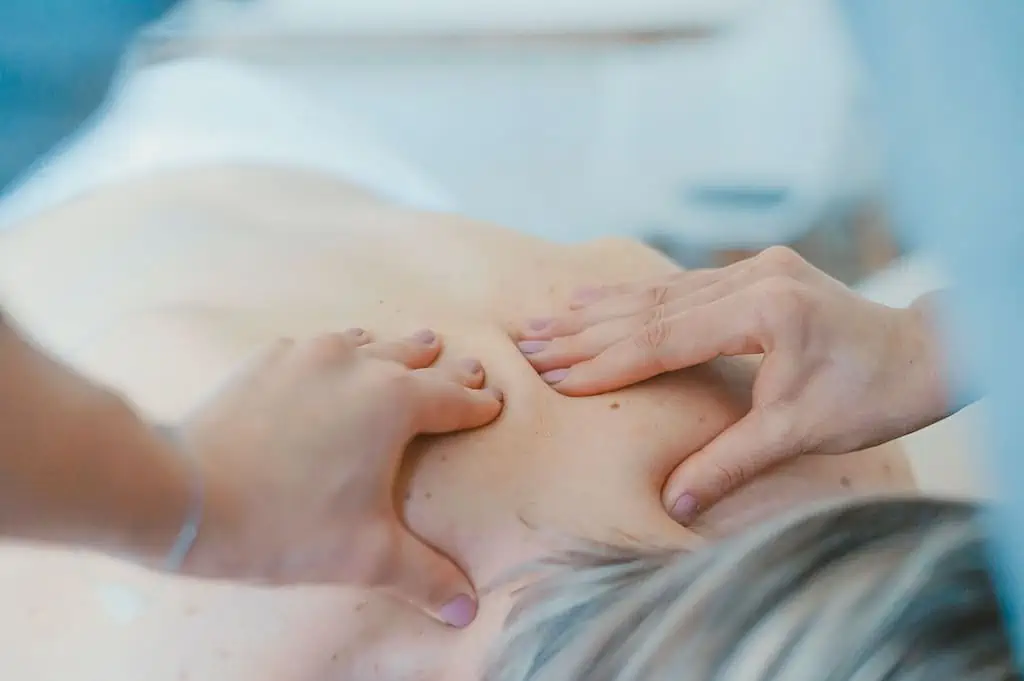
The heart chakra, also called Anahata, is the middle chakra, bridging the lower and upper energy centers. The heart chakra relates to how we feel about ourselves and towards others. It has qualities of love, compassion, understanding, empathy, gratitude, and joy.
The Anahata chakra is located in the center of the chest. To stimulate it, massage the upper back, shoulders, and upper arms, which are all related to this chakra. In addition, myofascial techniques targeting the pectoral muscles can further help the energy flow. Opt for jasmine, lavender, or Neroli scents if using essential oil.
Massage For The Throat Chakra
The throat chakra, also called the Vishuddha, is our center of communication and truth. This chakra relates to our ability to communicate effectively, listen to the views of others, and express ourselves authentically.
The throat chakra is located in the center of the throat. Therefore, massaging the back of the neck, including towards the base of the head, will help release blockages here. In addition, frankincense, rosemary, and eucalyptus are beneficial essential oils.
Massage For The Third Eye Chakra
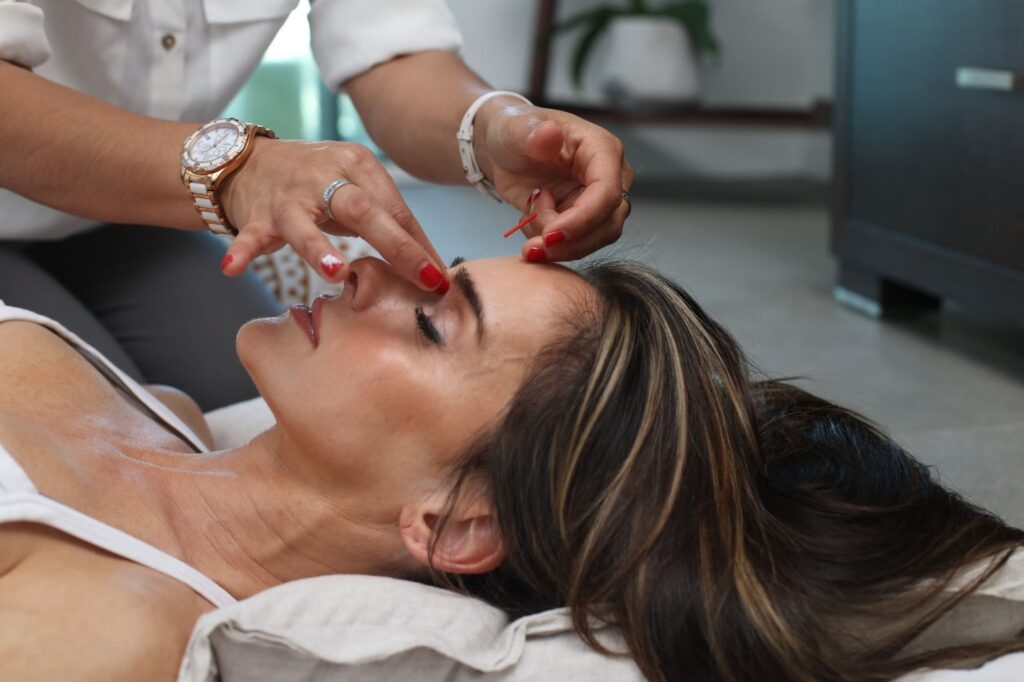
The third eye chakra, also called Ajna, is the intuition center that governs physical and spiritual vision. The third eye helps us find mental clarity to see things from other perspectives, connect to our instincts, and hear our inner wisdom. It is also associated with extrasensory and psychic abilities.
The third eye chakra sits between the eyebrows but massaging all around the face, and head can help open up this spiritual center. Pay particular attention to the temples, nasal sinuses, and jaw. Clary Sage, juniper, and frankincense work well when targeting the sixth chakra.
Massage For The Crown Chakra
The crown chakra, also known as the Sahasrara, is associated with our connection to the divine, thought, and conscious energy. The seventh chakra also helps us access higher states of consciousness and advance on our spiritual path.
The Sahasrara is located at the top or crown of the head. Therefore, a scalp massage will help to stimulate the energy here. Soft hair pulls and cervical traction is incredibly beneficial. Use frankincense, myrrh, or neroli essential oil when massaging this area.
Final Thoughts
Chakra balancing massage may be one of the lesser-known ways to align the energy centers; however, it could be one of the most potent methods. Massage and energy healing combined promote incredible benefits to the body, mind, and spirit. Therefore chakra balancing massages can and should be an integral part of your spiritual practice, along with meditation, yoga, and breathwork.


